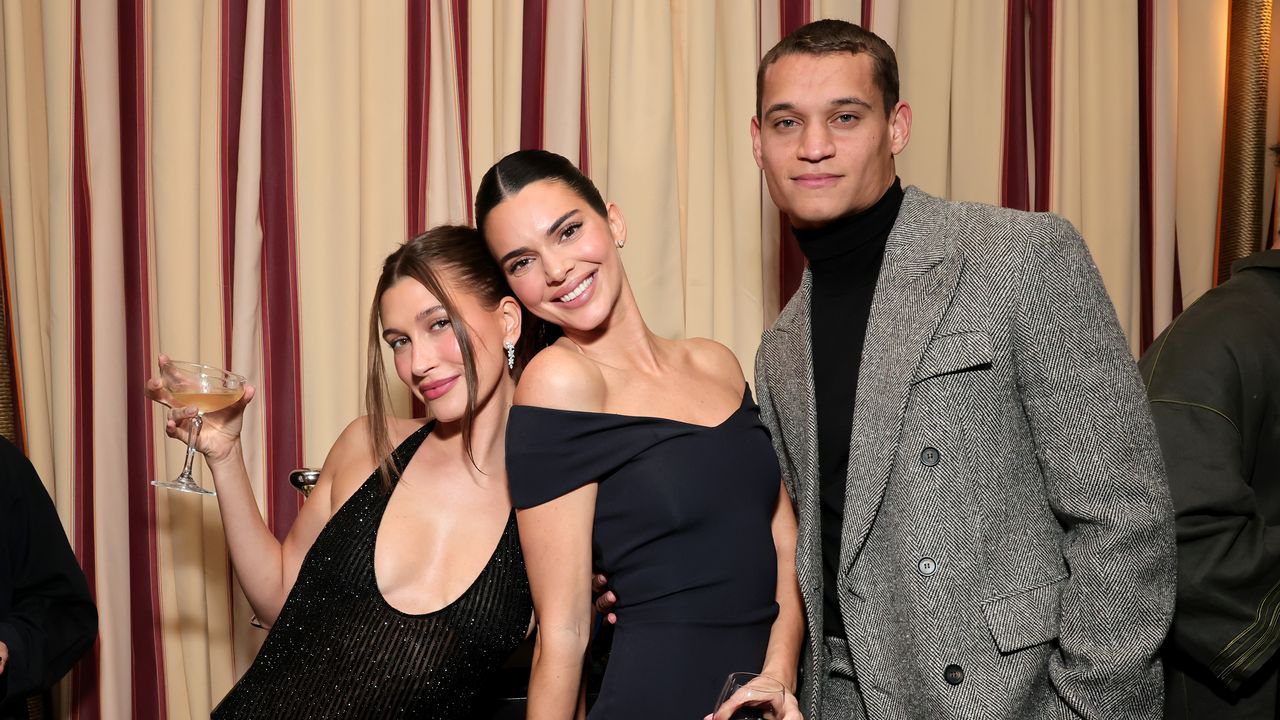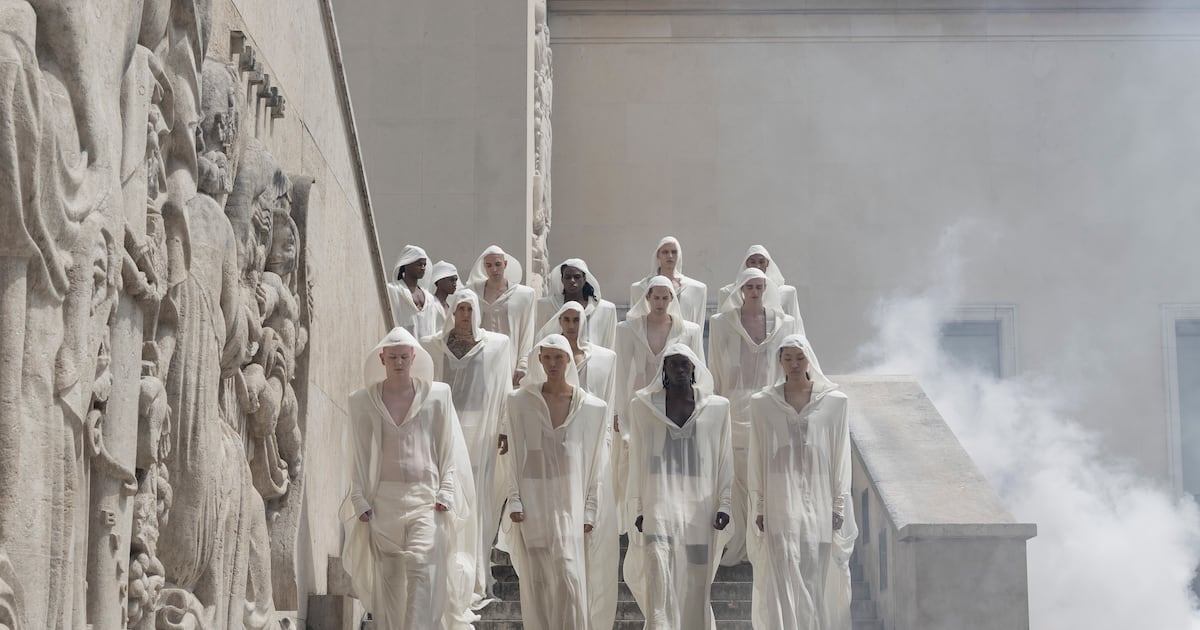When it comes to accessories lately, the mantra is more is more.
If influencers’ posts and brand campaigns are to be believed, you shouldn’t be walking out of the house without a ring on every finger (and toe, too), three or more necklaces and bracelets stacked up to the elbows. Colourful charms, or a gaggle of Labubus, dangle from not only bags, but shoelaces, too. A minimum of two belts are needed to hold up your pants. Even the accessories get accessories: Prada sells charm-adorned hair scrunchies.
The mania for jewellery and trinkets is even more jarring against the backdrop of the minimalist look that is still dominating fashion. Sales at brands such as The Row and Brunello Cucinelli are booming, and the ranks of up-and-coming labels include plenty like Kallmeyer, TWP and Maria McManus that have their own take on subdued, sleek fashion.
There’s no single reason for the accessories pile-on: For many shoppers, over-the-top jewellery looks pair perfectly with a simple pair of trousers and a crisp white T-shirt. With gold prices soaring past $4,000 an ounce, all those bracelets almost feel like a sound investment. There’s hope that bracelets or charms won’t go out of style when the trend cycle turns.
“It almost feels like there needs to be another reason to buy,” said Jim Wetzel, the co-owner of Chicago-based boutique Space 519. “Clients say, ‘I have enough sweaters, I have enough denim. What seems exciting and new?’”
But after years of price increases for high-end bags and clothes, accessories are also one of the last categories where just about anyone can shop any brand: A Gucci Bamboo 1947 bag charm costs just $250, for instance, while the bag goes for well over $5,000. Big-ticket investments in fashion increasingly go towards “staple” pieces that could theoretically be worn for years to come. For fashion, accessories represent a bright spot in a difficult market, and an opportunity. Accessories are a way to keep people shopping even as wider consumer sentiment dims. According to market research firm Circana, jewellery sales reached $13.6 billion in the US in June, up 13 percent from the previous year.
Mini splurges on accessories allow customers to have a little on-trend fun, too, and show some personality, particularly top-of-mind for younger customers. Even if you’re wearing the same wide-leg, light-wash jeans, crop top and Sambas as everyone else, at least your bag charms separate you from the pack.
This fall, both Reformation and Australian designer Rebecca Vallance launched jewellery, joining many other labels that are exploring new accessory categories. Brands are also embracing accessories-first styling in their marketing. Chloé’s landing page for its famed Paddington bag, for instance, includes a rotating display of bag charms under the header “Personalise Your Paddington,” while below the listing for Coach’s Tabby bag exists a section on “how to style it,” including new straps and charms. Pucci’s Fall 2025 campaign starring Naomi Campbell was heavy on the accessories, from large gold necklaces to head scarves, and Katseye accessorised their denim-centric looks with everything from belly chains to arm cuffs in their smash Gap campaign.
“There has been a dearth of creativity in fashion,” said Marc Bridge, the founder of jewellery e-tailer At Present. “People are looking for expression in other places, because it’s not coming from the traditional sources.”
And while the current obsession may evolve — we may not be wearing toe rings in five years — Wetzel feels the craze has permanently unlocked something in consumers, who will pay more attention to accessories moving forward.
“Usually, when categories have a level of excitement like that, it doesn’t really go away,” he said.
The Accessories Impact
As TikTok transforms products from complete unknowns to omnipresent overnight, younger customers in particular “search to find something that says ‘That’s me. I’m the only one that can have this,’” said Luciano Rodembusch, Pandora’s president for North America.
In August, the brand rolled out a new collection of talisman charms, meant to be a more sophisticated version of its signature product, sold alongside necklaces of varying thickness, with an eye for potential layering.
In Gen Z’s quest to find their personal style — a trending topic on TikTok this year — it’s both logistically and economically simpler to get that uniqueness fix through accessories. There are only so many ways you can do a white button-down, or a grey cashmere sweater, but endless slogans you can put on a baseball cap, or potential designs for a bag charm.
“Everybody wears [jewellery] differently, so it’s really a reflection of who you are,” said Los Angeles-based jeweller Adina Reyter, who has seen her DTC sales rise 50 percent in the past year. “I don’t think clothing can do that in the same way.”
Consumers aren’t just buying more jewellery, they’re going for bigger and bolder pieces too. New York-based jewellery designer Juju Vera’s shell necklace, which nabbed the number seven spot on Lyst’s hottest products list in the second quarter, for instance, features a shell-shaped pendant that’s four inches long and three inches wide.
Category creep is a common occurrence. Frasier Sterling, a Houston-based accessories label, launched with jewellery, but founder Frasier Lipton said that today, baseball hats, usually embroidered with espresso martinis, mahjong tiles and other cutesy illustrations, make up 80 percent of sales.
Brands of all sizes, however, are using accessories as an opportunity to be more playful, both with the products they sell and how they position them in their marketing and merchandising. Coach and Michael Kors, for instance, both sent necklaces down the runway that dangled with coin purses or wallets. At Chanel, models wore floral statement necklaces with matching earrings. Models at Jonathan Anderson’s Dior debut walked wearing over-the-top buccaneer hats. And accessories brands are using their recent momentum to expand in the other direction — Miami-based Eliou, for instance, began with homemade statement jewellery inspired by nature, like shell necklaces and fish pendants. The brand now sells apparel and bags, which requires more scale, but still works with artisans to keep that handmade touch present in pieces like crochet rompers and dresses, said Cristina Mantilla, the brand’s co-founder and designer.
For brands, it’s an easy upsell. Wetzel, for instance, said that he’s seeing more offer smaller leather accessories to coordinate with their bags, like AirPod cases or key chains; customers, he said, buy into it in the same way they’d want a “matching sweater set.” He’s keeping that interest in mind when curating Space 519’s assortment, paying more mind to accessory categories in buying but even styling its mannequins to cater to these tastes, too, dressing them in multiple belts.
While the craze includes some true splurges — think Sorellina’s $64,300 “The Playlist” necklace, with a pendant shaped like a cassette tape or a $1,000 Fendi bag charm made to look like a bowl of spaghetti — there’s only so much you can charge for some accessories.
“If I was going to invest in a really fancy piece of jewelry, it would not be a toe ring,” said Reyter.


